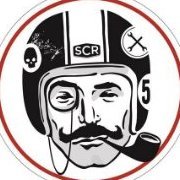New York Times Article On Chiang Mai
-
Recently Browsing 0 members
- No registered users viewing this page.
-
Topics
-
-
Popular Contributors
-
-
Latest posts...
-
22
Booking hotel - interesting breakfast inclusion issue
Its just an algorithm... there are many variables... ... Booking using a VPN from overseas (different countries), booking through the Agoda App on your phone, or Website on your laptop, cache cleared etc... then the price is also different one day than another. I had a similar issue recently - Just my Son and I travelling, so 1 Adult & 1 child (including breakfast) which was more expensive than 2 Adults (including breakfast)... So I just booked for two adults and left it at that without further issues - Simply put, the booking algorithm had not been set up to factor in single parent travel. I get the same with insurance in the UK (when adding my Wife to my parents car)... For some insurers, the cost is just a processing fee (because she actually lowers the overall risk, when considering my 'aged' parents may otherwise be driving), then another insurer the cost is £100 more for a few weeks (because they consider an overseas driver greater risk). The point of these examples is to highlight that when it comes to costing and prices all (most) of the sites run off an algorithm and they simply depend on the programming - second guessing why or how etc is a fruitless task. -
60
-
4
Certificate of residence/Proof of Address.
Most of the translation services in Bangkok will do it and mail it to you. Can all be arranged online through Line, e-mail, etc. -
134
Finance Thailand Tightens Mobile Banking to Curb Scams
This isn't going to get any better. I keep banging on about Crypto and Bitcoin especially, about why it is so special being sovereign self custody and permissionless wealth. Even as the fiat noose boils the frogs more and more with each new restriction announcement like this one, people still give Bitcoin downvotes. When the real financial crisis arrives you'll understand why access to your own money was becoming tighter and tighter. Hey I really don't give a fig if most still don't get it, by the time the penny drops it will be too late. The fiat debt based system is completely broken. I'm prepared for what's coming. Sadly many won't be. -
45
Best city after 52 years
Possibly, I may of mistaken you for someone else regarding being a Trump hater. So many here. It happens. -
815
Israel Hamas War the Widening Middle East Conflict
Aid agencies criticised the deliveries, arguing airdrops are unsafe in crowded areas and fail to reach those most in need, with many parcels falling into the sea or landing in restricted zones. The operation came shortly after Hamas announced it had accepted a ceasefire proposal from Arab mediators in the conflict that began with its 7 October 2023 attack. Israel has yet to respond and has outlined plans to reoccupy Gaza City and other populated areas, raising concerns of worsening famine and further humanitarian disaster. Aid agencies criticise Gaza airdrops as unsafe and ineffective
-
-
Popular in The Pub


.thumb.jpg.3ee24d9400fb02605ea21bc13b1bf901.jpg)





.thumb.jpg.bc523c85a8d558dbc282dca7a2e602c9.jpg)

Recommended Posts
Create an account or sign in to comment
You need to be a member in order to leave a comment
Create an account
Sign up for a new account in our community. It's easy!
Register a new accountSign in
Already have an account? Sign in here.
Sign In Now